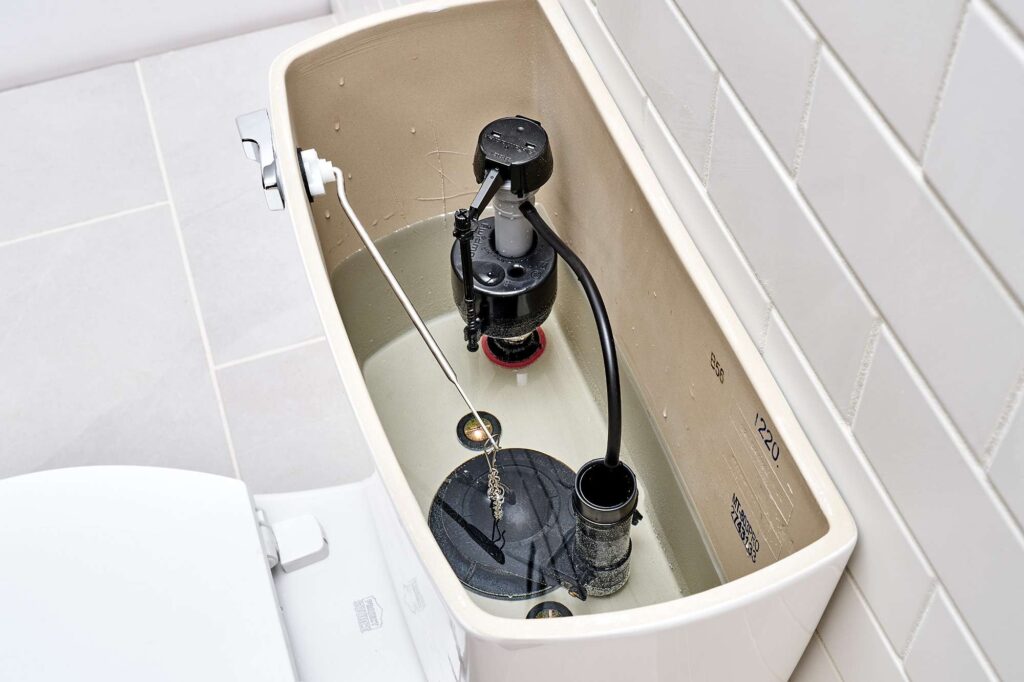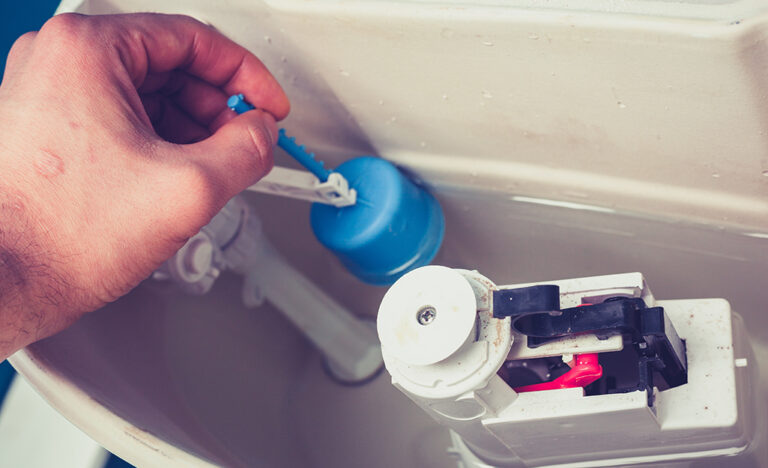Are you facing the frustrating issue of a toilet that won’t fill up after flushing?
Moreover, there could be several reasons behind this common household problem.
Such as Insufficient water supply, Fill valve issues, Flush valve or flapper problems, Blockages or clogs, Malfunctioning float assembly, also Broken or damaged components.
A properly working toilet is critical for daily convenience and hygiene. You recently used the restroom, flushed the toilet after you were done, and then closed the lid. However, as you prepare to wash your hands you notice something strange about the toilet.
Say goodbye to plumbing issues since you are already here.
Here, you will comprehend the prevalent factors in a suitable way. Step-by-step answers regarding your problems. Let’s get rolling.
What are some typical reasons for a toilet not properly filling up after flushing?

Insufficient water supply: A lack of proper filling for the toilet tank can result from various common factors. Initially, challenges with the water supply valve, like malfunctions or operational constraints, can impede fluid movement. Moreover, bends or kinks in the line may restrict fluid entry.
Furthermore, supply interruptions due to maintenance or plumbing issues can worsen the situation. The interaction of these elements collectively leads to inadequate flow, affecting the tank’s function.
Fill valve issues: Challenges with the fill valve can disrupt the toilet tank’s refilling process. A flawed, obstructed, or improperly adjusted valve can impede the smooth flow of water needed to replenish the tank after flushing. When this valve malfunctions, it disrupts the mechanism that regulates the level. If it becomes clogged due to sediment buildup, it obstructs the passage of flow.
Therefore, an improperly adjusted mechanism can prevent the tank from receiving the correct water amount during refilling. These issues collectively compromise the proper functioning of the toilet tank, leading to inadequate refilling.
Flush valve or flapper problems: Problems related to this can impact the toilet’s flushing and subsequent refilling. If it does not operate correctly, fails to open and close as needed, or r fails to seal effectively, this can disrupt the expected flow of water during the flushing process. As a consequence, there might be an incomplete flushing action, leading to insufficient water levels within the toilet tank. These issues, centered around the flush valve or flapper, can consequently affect the overall functionality of the toilet.
Blockages or clogs: Obstructions in the supply line or the toilet tank can restrict flow and prevent proper filling.
Malfunctioning float assembly: A bent, damaged, or misaligned float part might alter the water level in the tank, leading the toilet to not fill enough.
Broken or damaged components: leaks can result from cracks or damage to some types of toilet tank parts, which can also prevent the tank from being refilled.
Trip Lever Isn’t Working Properly: The toilet’s flushing process begins when you push the trip lever or handle. This lever, found inside the tank, is connected to an arm, which, in turn, connects to the toilet flapper. When the handle is pushed, the lever raises the flapper, releasing water from the tank to flush the bowl.
Sometimes, the trip lever can get stuck in the raised position, preventing the flapper from closing fully. This leads to water continuously draining from the tank, and the toilet doesn’t fill properly. To fix this, you may need to open the tank lid and manually lower the arm so the flapper can seal. If the lever arm breaks, pushing the handle won’t flush the toilet.
What are the potential remedies or solutions for every identified cause?
Here are some top-notch solutions for each cause of a toilet not filling up after flushing. On the other hand, Remember to follow safety precautions when working with water and plumbing components.
Insufficient water supply:
- Check the supply valve to the toilet and ensure it is fully open. If there are any leaks or kinks in the line, address and fix them accordingly.
Fill valve issues:
- Clean or repair the fill valve to remove any debris or dust that may be preventing its proper functioning. If the fill valve is beyond repair, consider replacing it with a new one.
Flush valve or flapper problems:
- Clean the flush valve and flapper to ensure proper sealing. If the flapper is worn out or damaged, replace it with a compatible one to secure a tight seal during flushing.
Blockages or clogs:
- Remove any blockages or other items from the water line and the toilet tank to restore normal flow.
Malfunctioning float assembly:
Analyze and adjust the float level to the proper height. Remove the float if it is damaged or misplaced.
Broken or damaged components:
- Identify and replace any cracked or damaged parts in the toilet tank to prevent leaks and proper filling
What are the common steps to fix toilet problems?

Check the water supply
- Turn off the water flow valve to the toilet.
- Inspect the line for any visible leaks, kinks, or blockages.
- Ensure that the valve is fully open.
Examine the fill valve
- Find the water level hole on the left side of the toilet tank by lifting the lid.
- Verify that the fill valve is in good condition and not clogged with debris.
- Check the float arm for any misalignment or damage.
Inspect the flush valve and flapper
- Observe the flush valve to see if it opens and closes correctly.
- Check the flapper for proper sealing and any signs of wear or damage.
- Clean or replace the flapper if it is not sealing properly.
Check for blockages or clogs
- Use a flashlight to inspect the toilet tank for any blockages or foreign objects.
- Remove any trash or other stuff that might be closing the water flow.
Evaluate the float assembly
- Make sure the float is not damaged or destroyed.
- Adjust the float level to the appropriate height if necessary.
Inspect other components
- Check the chain connecting the flush handle to the flapper for proper adjustment.
- Look for cracks or damage in other toilet tank parts.
Test the toilet
- Open the water main button, then wait for the toilet tank to fill.
- Flush the toilet and observe if it refills properly.
Implement necessary solutions
- Take the proper solutions for each identified issue based on your observations during the problem-solving step.
- Clean, repair, or replace any faulty elements
Test again
- Repeat the flushing operation and check that the toilet is now properly filled.
Regular maintenance
- To prevent future problems, regular maintenance of the toiletries must.
FAQ
How can I make my toilet fill up more?
To fix toilet fill valves with float arms, remove the
cap lid, locate the tank, adjust the valve, and use a flat-head screwdriver to raise the water level.
Can a toilet flush valve be repaired?
Yes, Replace the flush valve flapper with a repair kit like Fluidmaster’s Model 555C, which includes a new flapper, drain seat insert, and sealant ring.
How do you test a toilet flush valve?
Test flush valve leakage by dying toilet water with food coloring, waiting 10-15 minutes, and inspecting the bowl.
How does a modern toilet flush valve work?
The dual flush toilet valve works by raising a float at the bottom of the cistern, connected to a seal, which lifts and remains open until water drains to the toilet, then drops.
Which valve is used in the toilet?
The flush valve, located in a toilet cistern, flushes toilet contents into the sewer system via a drainpipe.
Conclusion
A toilet that does not fill up after flushing may be caused by a number of ordinary concerns, including a poor water supply, fill valve problems, and broken or damaged parts. Additionally, you can quickly resolve your issue by checking the water supply, inspecting the flash valve, and evaluating the float assembly.
Now, It is imperative to address and fix the issue right away because it is of the utmost significance to have a completely functional toilet. Enjoy your hassle-free, fully functional bathroom experience right now.

